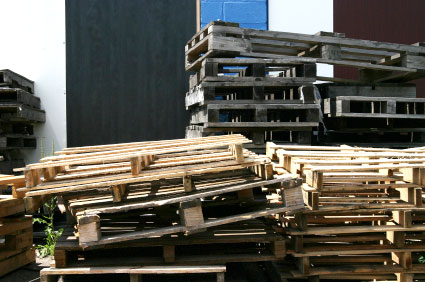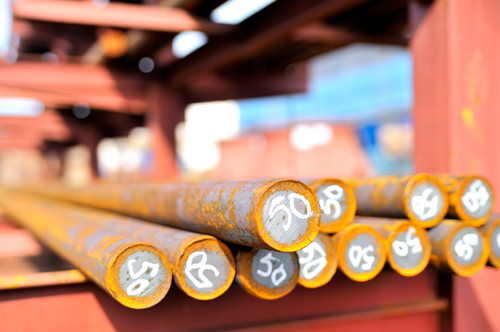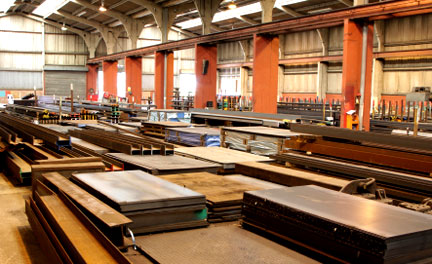A Guide to Stacking Bulk Materials
Tips from OSHA to stack drums, bales, pallets, pipe and other heavy materials safer and more effectively

When you have bulk materials to store and handle, when is it best to stack them on the floor, and when do you need to move it to storage equipment like heavier racks? How can you safely and effectively stack these materials on the ground? OSHA offers some guidelines on the question from a safety perspective. When you do opt for either floor stacking or rack storage, what are some safeguards you should take?
Stacking can be dangerous, but there are ways to safely stack most items
As it applies to warehousing, stacking is a problematic way to store things from a space perspective. Most items, particularly palletized ones, don’t lend themselves to the kind of vertical space utilization rack storage does. When correctly done, stacks of things are fairly safe, so long as the stacks are stable and aren’t too tall. But, as OSHA says, “stacking materials can be dangerous if workers do not follow safety guidelines. Falling materials and collapsing loads can crush or pin workers.”
Some stacking items and OSHA recommendations

Above: stacked layers of round tubing on a cantilever rack arm. This type of load should involve stops or vertical arms to prevent rolling and dangerous load shifts.
Items of all types should be stable and self supporting
- Lumber: Adhere to OSHA’s guidelines for stacking heights: 16 feet (manually); 20 feet (forklift) maximum stacked heights. Remove screws and nails.
- Bags: Stack them in interlocking rows. Step back layers of bags as they’re stacked, and cross-key at least every 10 layers.
- Bars and Pipe: Don’t store in main aisles, to avoid creating a hazard to people passing by as loads are removed either by hand or forklift. Using a well-designed cantilever rack layout and employing good pedestrian safety and traffic management practices. Stack & block (or chock) these cylindrical loads to help prevent tilting. Use caution if you choose to use a building column for these purposes. If you do use a columns, paint them to indicate the maximum height a stacked load can reach. See “Picking Bar Stock, Steel, or Pipe: Rack Storage Options” for more information.
- Barrels and drums: Racks are much safer for these items, and allow higher storage density. If you must stack barrels, stack them systematically. Block the bottoms to prevent rolling. Use plywood, planks or pallets between each stacked tier to create a firm and flat surface for the next layer when you’re stacking on ends. Chock the bottom layer to help prevent shifting.
- Bales: Bales of rags or baled paper should be stored inside, not outside. Leave no less than 18 inches between bales and walls or other facility structures such as support columns. Leave adequate space (18″) between the top of a bale stack and sprinkler heads. Be sure that adequate fire prevention measures are taken with these loads.
- Boxed materials: Band, cross-tie with plastic fiber ties, or stretch-wrap boxes to help ensure stacks of them will remain stable. Stack like weight and size boxes together whenever possible.
- Pallets: Pallets are routinely stacked in warehousing operations as materials move through an operation. Handling stacked pallets is a topic in and of its own. See our guide on stacking pallets for more information.
- Sheet metal and heavy flat items: Sheets of steel or other metals are notoriously difficult to store. They do lend themselves to relatively easy stacking, but are hard to load/unload. Since they are heavy, bulky, relatively easy to damage, and have sharp edges, they’re an ergonomic and safety problem. See “Sheet Metal Storage Alternatives” for more information.

Stack safely. Consult safety and engineering professionals
In general, stacking height limits should be determined for every type of item you wish to stack, and adhere to those guidelines. While there are definitive guidelines for various load types, you should always consult with professionals for any stacking operation involving heavy materials. Since people frequently work around and near these stacks, it’s a critical safety issue that may require EHS, safety or engineering guidance. The stacking limits above should be considered guidelines only.
More resources
- For extensive information, see OSHA’s PDF (2MB – opens in a new window) “Materials Handling and Storage.”
- Sheet Metal Storage Alternatives
- Download our Guide to Cantilever Racks
Scott Stone is Cisco-Eagle's Vice President of Marketing with 35 years of experience in material handling, warehousing and industrial operations. His work is published in multiple industry journals an websites on a variety of warehousing topics. He writes about automation, warehousing, safety, manufacturing and other areas of concern for industrial operations and those who operate them.



